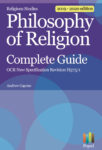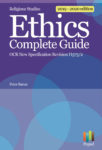Does Gaia make sense?
March 10, 2011
Can we reverse the illness we’ve inflicted on Gaia?
James Lovelock is a climate change scientist who in the 1960s coined the word Gaia, Greek goddess of the earth, to sum up the interdependent eco-system where biological and non-biological elements combine like the sap and bark of a tree to form one living entity. The planet is like a body, it’s skin is the surface of the earth, and the body has got sick. 
James Lovelock sees this as an accident – it’s as if someone had grabbed a gun without realising what it did and accidentally shot their child. So CO2 pollutants have accidentally started a great warming similar to the one which happened 55 million years ago and triggered a massive depopulation to a few thousand of our ancestors inhabiting the north pole. Gaia – the complex interdependent entity that sustains us – has been thrown into disequilibrium.
Consider the mix of gasses that perpetuate human life. Oxygen forms 21%, nitrogen 77% and CO2 just 0.03% of our atmosphere. A very slight change in CO2, such as that produced by a gigantic subsea volcanic eruption millions of years ago, can trigger a set of reactions that raise global temperature quickly – some say by as much as 5 degrees in the next hundred years.
To make matters worse, we have injured the earth’s lungs, by deforestation. Plants and trees breathe in CO2 in spring and exhale oxygen (a process reversed in the autumn). By reducing plant life we further raise the CO2 levels. As the levels rise, so the sea becomes more acidic*, as the sea becomes more acidic the natural CO2 absorbing plants and plankton die, and so a cycle of increased CO2 and hence global warming resulting from it accelerates. The process, argues Lovelock, is now irreversible.
How should we evaluate this? Science aside, Gaia is metaphor – the earth is like a body (not precisely but in some ways). Lovelock has modified his view, present before 1988, that Gaia had a purpose to sustain life – that Gaia was teleological. As Richard Dawkins pointed out, it’s nonsense to imply that all of biotic and non-biotic life is altruistic – working for the common good. Rocks and viruses cannot have this kind of purpose.
Moreover, the implication that humans need to look on as Gaia restores the balance within nature is also nonsense. We have always managed nature, cut down forests, planted crops, hunted and also sought to wage war on deadly viruses, eliminating smallpox and other diseases. To consider smallpox as part of a vast interdependent benign organism is clearly mistaken. Humans have struggled for survival as the earth has gone through cycles of warming and cooling as the sun’s activity changes, impacting on elements of Gaia – it is just coincidental that you and I are living in such a benign period for human life.
Of course Lovelock is right to blame our activities for partly causing Gaia to go sick, and right to urge us to go for nuclear fuel options and other profound changes in lifestyle before we injure the natural processes of earth’s self-regulation further. Personally, though, I don’t share his hostility to wind-farms. But I do agree that current behaviour of human beings reflects the utilitarian vice described in the essay in extract 3 (Environmental Ethics section) – pursuing individual utility against the utility of future generations has been deeply destructive. But how do we persuade people in a utilitarian age to do otherwise, and care about non-existent beings? And given that we have just a very few years to slow the process of warming, should we barricade ourselves in our most favoured regions and prepare for war?
Read more at Suite101: The Effects of Carbon Emissions on Oceans: Carbon Dioxide Affects Marine Life Through Ocean Acidification http://www.suite101.com/content/the-effects-of-carbon-emissions-on-oceans-a125832#ixzz1GITKB8qr
Listen to YouTube interview with James Lovelock or read an article by him in the Independent.






0 Comments